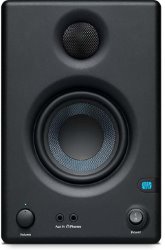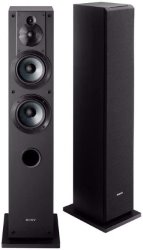Presonus Eris E3.5 vs. Sony SSCS3
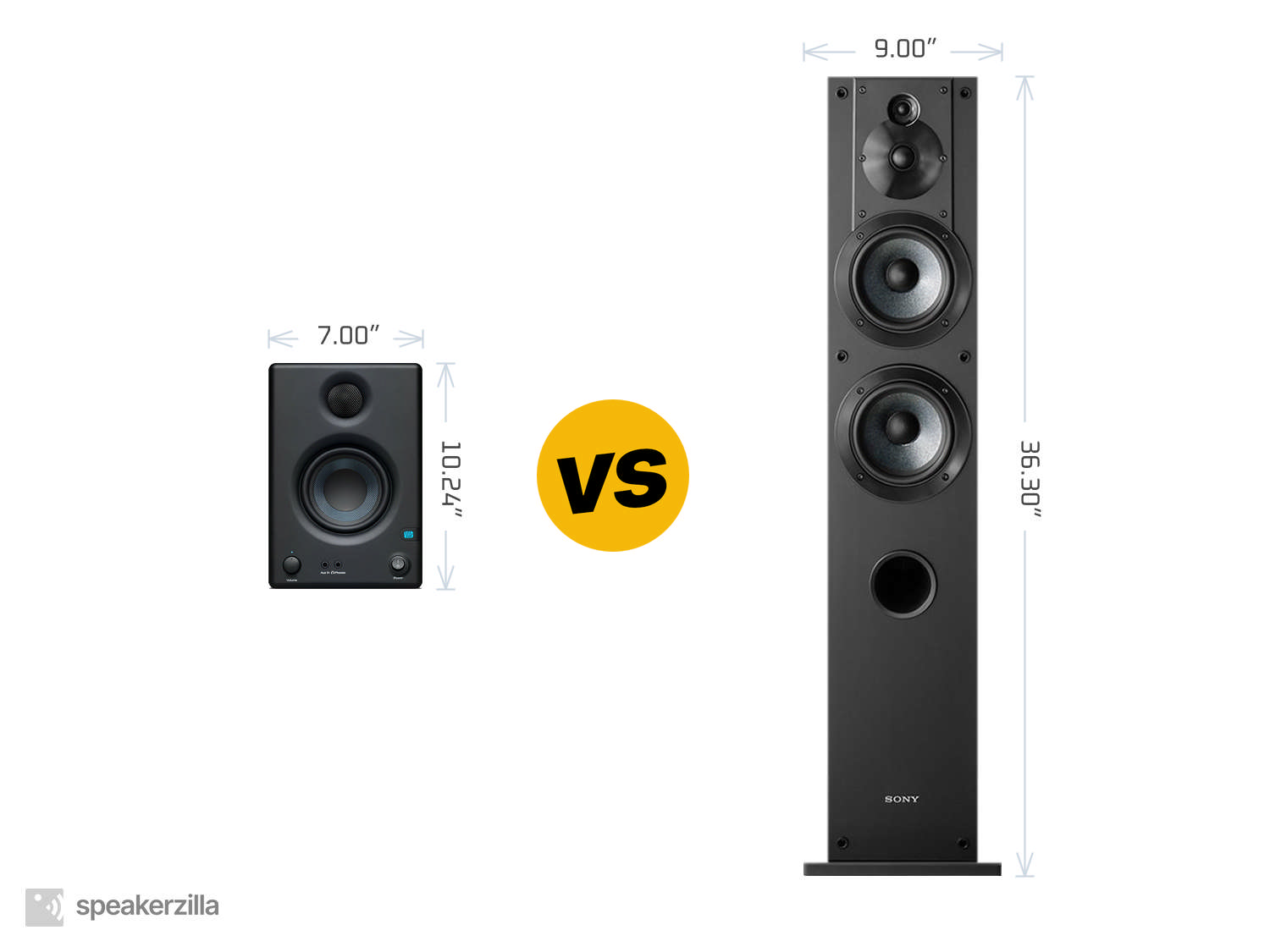
| Presonus Eris E3.5 3.5” Near Field Studio Monitor | Sony SSCS3 3-Way Tower Speakers |
| MSRP | |
| $100 | $460 |
| Dimensions (H × W × D) | |
|
10.24” × 7.00” × 7.68” 260mm × 178mm × 195mm |
36.30” × 9.00” × 10.25” 922mm × 229mm × 260mm |
| Power Type | |
| Powered | Passive |
| Frequency Response | |
| 80-20,000 Hz | 45-50,000 Hz |
| ASR Score | |
| 1.5 | n/a |
| ASR Score w/Subwoofer | |
| 4.3 | n/a |
|
Amazon.com
|
Amazon.com
|
Key Takeaways
TLDR Summary: In the clash of compact clarity versus room-filling prowess, the PreSonus Eris E3.5 studio monitors bring accurate audio reproduction to the near field. They excel in intimate settings, perfect for desktop audio production with their detailed midrange and precise imaging. On the other side, the Sony SSCS3 tower speakers stand tall, designed to fill spaces with sound. They offer a 3-way driver system that caters to a broad frequency range, suited for home theater enthusiasts and casual listening. The choice hinges on use—meticulous audio work versus immersive listening—and space constraints.
Speaker Comparison
When we wade into the realm of sound reproduction, the distinctions between studio monitors and home speakers often blur, yet they serve different masters. The Presonus Eris E3.5 monitors are precision tools designed for audio professionals and enthusiasts seeking a flat, unembellished sound to make critical mix decisions. In contrast, the Sony SSCS3 tower speakers are crafted to deliver a pleasurable and engaging listening experience to the home audio aficionado. Each caters to its audience with a specific intent in mind, which is crucial to understand before diving into their comparative nuances.
Design Philosophy: Accuracy vs. Enjoyment
The Presonus Eris E3.5 represents the quintessential studio monitor ethos—accuracy above all. These compact nearfield speakers are engineered to deliver an honest representation of the audio, with a linear frequency response ensuring that what you hear is as close to the source as possible. The Sony SSCS3, towering with its three-way design, aims to fill a room with robust, dynamic sound. The emphasis here is on a broad soundstage and enhanced low-end response, tailored for an immersive listening experience rather than the pinpoint accuracy essential in a studio setting.
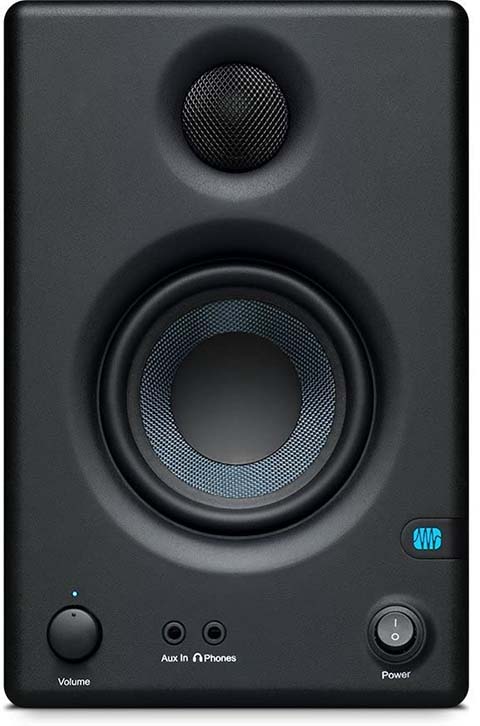
 (at Amazon.com)
(at Amazon.com)Sound Characteristics: Detail vs. Dynamism
Audiophiles and mixing engineers often talk about the 'sound' of a speaker. The Presonus Eris E3.5 exhibits a clinical precision that reveals the subtleties in a mix, with a focus on mid-range clarity and a tight low-end. However, they may lack the 'excitement' factor on first listen for some due to their flat response. The Sony SSCS3, with its 3-way design which includes a dedicated woofer, mid-range driver, and tweeter, is more about the visceral feeling of sound. It's designed to produce a more pronounced bass and an overall warmer sound signature that might be more immediately gratifying to the casual listener.
Usage Context: Mixing Desk vs. Living Room
In terms of placement and intended use, the differences are again quite evident. The Presonus Eris E3.5 is best situated at arm's length in a well-treated acoustic environment, intended for near-field listening where the 'sweet spot' is crucial. In contrast, the Sony SSCS3 is a floor-standing speaker that is at home in a living room or a home theater setup, designed to project sound across a larger space. The dispersion characteristics of the SSCS3 are therefore geared towards filling the room, whereas the Eris E3.5 is more focused and direct.
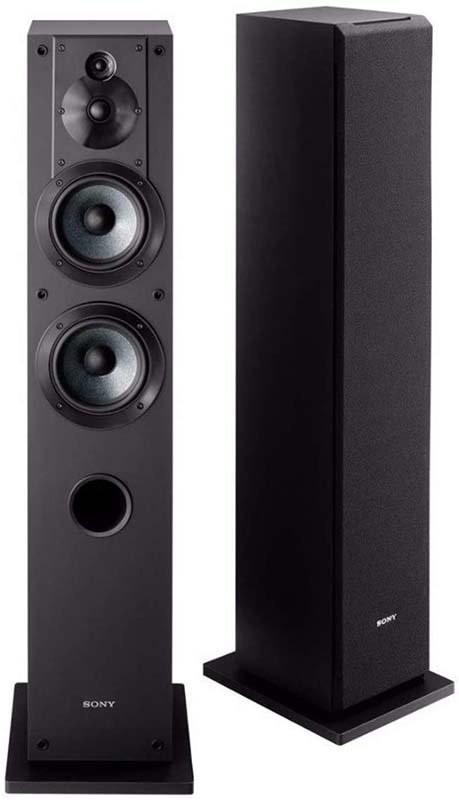
 (at Amazon.com)
(at Amazon.com)Connectivity and versatility also play a role in discerning one's choice. The Presonus Eris E3.5 boasts unbalanced RCA and balanced TRS inputs, facilitating a straightforward connection to audio interfaces or mixing consoles. It also includes a front aux input for quick connectivity with portable devices. The Sony SSCS3, on the other hand, has traditional binding posts compatible with most home audio receivers and amplifiers, making it a plug-and-play solution for non-professional users.
Compare to similar speakers
Build quality and aesthetics are subjective, yet important factors. The Presonus Eris E3.5, with its compact form factor and industrial design, exudes a utilitarian charm that speaks to its professional pedigree. The Sony SSCS3's sleek and tall profile with a black finish offers a more classical speaker appearance that can meld seamlessly with home decor. Both are solidly constructed, but the aesthetic considerations may sway users depending on their personal taste and the environment in which the speakers will be used.
Ultimately, choosing between the Presonus Eris E3.5 and the Sony SSCS3 comes down to understanding one's listening preferences and application. For the audio professional or the dedicated hobbyist seeking a true sound without coloration, the Eris E3.5 is a near field monitor that will unflinchingly reveal every nuance. For the home audio enthusiast looking for a speaker that brings music and movies to life with room-filling sound, the SSCS3 stands tall as a beacon of sonic enjoyment. Both speakers stand as testaments to their respective crafts, and the choice between them is not one of quality but of purpose.
- Presonus Eris E3.5 reviews and FAQs
- Sony SSCS3 reviews and FAQs
Check Current Prices: |
|
|
Amazon.com
|
Amazon.com
|
Affiliate Disclosure: As an Amazon Associate, we earn from qualifying purchases.
